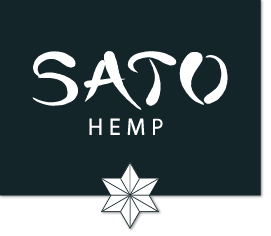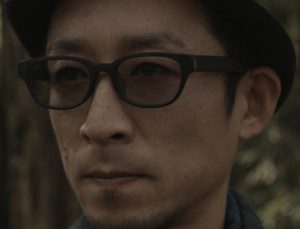
Takuya Sato
Founder, Designer, Hemp Activist
Takuya Sato is the visionary, founder, and heart-led leader of Sato Hemp, International. Mr. Sato has focused his career and business ventures on restoring hemp’s reputation as a beneficial plant that can be utilized in so many ways. In Japan, Mr. Sato has overseen the launch and management of hemp-based product lines in fashion, beauty & cosmetics, and food, and is now proud to bring his deep experience to his vision for Sato Hemp, a luxury clothing brand creating stylish and comfortable apparel that is all based on hemp fiber.
The Sato Legacy
The Sato family had passed the knowledge of hemp farming, together with rice and millet, from father to son for 17 generations, going back 400 years to the Edo era. After World War II, growing hemp became illegal in Japan, and so Takuya Sato’s grandfather decided to open a motorcycle shop. That business was passed down to Sato’s father, and as a result, Takuya Sato was also a champion motocross racer in his youth. Additionally, he studied Shaolin Kung-fu and was ranked the number one student in the prefecture of Yamanashi from first to ninth grade. As a result, he says that “motorcycles and martial arts give me the courage to walk my own path in life without fear.”
While traveling around the world after he graduated from university, Mr. Sato encountered hemp and hemp culture seemingly everywhere he traveled. Upon returning to Japan to begin his career he resolved not only to work to revive his family’s hemp legacy, but to bridge the ancient traditions of Japan to the modern era, which he has done successfully for many years.
The Sato Hemp Vision
Sato Hemp’s vision is to be the fashion industry leader for luxurious hemp-based clothing and to put compassion in fashion.
Sato Hemp combines the spirit of being in harmony with nature and the many functionalities of hemp, which have both been nurtured over time and refined through Japanese culture. We are promoting a new approach to lifestyle, a new approach to economy, and a new approach to craftsmanship, all of which enables people around the world to live together in harmony with nature through fashion, in hope to someday see a truly sustainable and just society.
Sato Hemp Is Putting Compassion In Fashion
Sato Hemp’s luxurious apparel is hand made in Japan by artisan manufacturers who hire the best apparel crafts-people and pay them a fair, living wage. Our collections contain only top-quality, artisan clothing, hand made in Japan with care.
As the first member of the Compassionate Economy, Sato Hemp is putting “Compassion In Fashion” by joining with other like-minded companies to donate all profits to ending hunger in the world as soon as possible. Join us if you will, and we will work together to build a more compassionate and caring world.
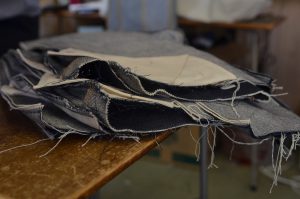
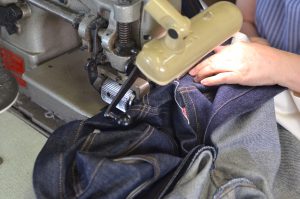
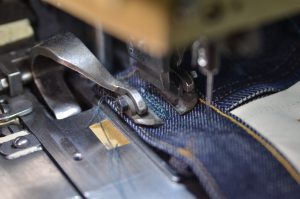
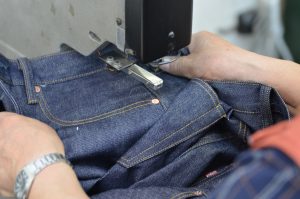
Hemp
For Fashion, For Life
Sato Hemp is committed to using only hemp and organic cotton fiber in our luxurious clothing. Hemp is not well known for being a “luxurious” fiber, but in fact, it can be, and our apparel is the proof. Hemp itself, as a crop, goes well beyond sustainable, and it can even be said that it is an environmentally regenerative crop.
Why is Sato Hemp Passionate About Hemp and Organic Cotton?
Over half of the clothes we wear are made of cotton.
At Sato Hemp, we want the world to understand our reasoning behind our unique, comfortable, and above all, “beyond sustainable” clothing.
“100% cotton” may sound high quality and nature-conscious, but in reality, the industrial cultivation of cotton is harmful to the health of farmers and farm workers, pollutes our water, destroys natural ecology, and devastates our farmland. Although cotton is grown on only 2% of the world’s farmland, the agricultural chemicals used for cotton comprise a vast 26% of the total agricultural chemicals used around the world. Within the U.S., nearly half of all agricultural chemicals are used for the cultivation of cotton.
Why does this one seemingly vital crop require so many agricultural chemicals?
Cotton is a delicate plant. It’s very susceptible to the environment it is grown in, and therefore it requires exacting cultivation, including soil sterilization and re-improvement using chemicals and fertilizer, from the seminal stages. Herbicides and pesticides are needed to rid the crop of weeds that would limit the crop yield and insects that devour the cotton leaves. During harvest, the leaves and stems must be killed to prevent chlorophyll from staining the cotton, so defoliant is sprayed from airplanes, herbicides similar, and in some cases the same, as those used in the Vietnam War.
But the list of chemicals and chemical processes does not end there.
After harvest, chemical agents are used to aid the spinning process. On top of this, chemical starch, bleaching agents, synthetic dyes, preservatives and fabric softeners are also used in the processing stages.
Industrial wastewater is discharged in quite significant quantities from the factories, and many of those factories around the world unlawfully dilute their wastewater in order to meet environmental standards.
These are all deep problems we face today.
Because of this, organic cotton began gathering attention as an alternative to cotton, starting in the early 1980s. Only after passing rigorous inspections and gaining approval from local certifying bodies can cotton be stamped ‘organic cotton.’ Organic cotton costs on average between 1.5 to twice as much as conventional cotton, but because of the organic growing methods used, has a minimal impact on the environment.
Did you know that George Washington, the first US President, was a Hemp Farmer?
Hemp is a plant that originally grew naturally in all areas the world, is resistant to weeds and insects, and does not require any chemical fertilizers, herbicides or pesticides to manage its growth as a crop.
In other words, it can be said that hemp does not need to be crowned as “organic” because it’s already 100% organic!
By wearing clothing made of hemp and organic cotton, which requires no agricultural chemicals or pesticides, we can save more farmers from the health risks posed by cultivating cotton, a crop that requires a myriad of unsafe chemicals, as we have already noted.
Hemp is also the champion plant when it comes to carbon sequestration – it absorbs more CO2 than any other plant, and in the near future when it can be grown in bulk around the world, it has the potential to reduce the carbon load in the atmosphere and begin to slow, if not reverse, global warming.
As Sato Hemp we use Hemp and Organic Cotton to reduce the burden we impose on our environment, and because we sincerely want the world to understand our reasoning behind our comfortable, and above all, “beyond sustainable” clothing.
Why We Use Hani Dye
Hani Dye is a traditional dying method dating back to the Manyo Dynasty, where it was used to impart brilliant colors to the clothing worn by the emperors and their royal houses. It’s roots date back to the Jomon period (131 B.C. ~ 4 B.C.).
The Hani Dye method as it is seen today is a revived ancient technique from this era. The dye consists only of water, plant materials, and refined red and yellow natural soil. No caustic dye mordants are used.
Our dyes are made of carefully selected soil, which is then refined and processed into dyes. Our “Ayers Rock Pink,” for example, is made from the sun-tanned soil of Australia’s Ayers Rock, and our “Bali Charcoal” is made from the dark brown soil of Danau Batur, a crater lake formed at the foot of Bali’s active volcano, Mount Batur.
The dye therefore contains zero toxic substances, so the water used in the process can be fully recycled, keeping our environment clean
In addition, no chemical processes are used in the processing stages. Therefore, bleach, shrink-proofing agents, and fabric-softeners are not applied. The dyeing process takes longer time to complete, but it is guaranteed to be environmentally friendly.
Unlike vegetable dyes, where the color fades after being exposed to sunlight over a period of time, the Hani Dye hardly fades. By avoiding chlorine bleaches or fluorescent brightening agents, and by choosing environmently and health conscious detergents, your clothing will retain a silky smooth texture and beautiful color for many years to come.
It’s written in ancient folklore that people would dye their clothes to convey their love towards another person, or to pray for their safe travels. We believe that these ancient methods of hand dyeing embody such mystical elements.
